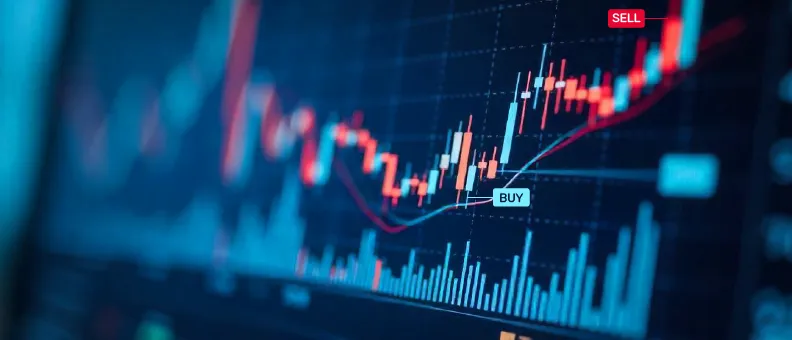What are Candlestick Patterns? Definition, How They Work, Examples


From the time when financial markets were set up till today, many techniques, methods and tools have evolved to help investors earn steady returns. One such technical advancement is known as the candlestick pattern, which is considered by many to be the ‘language of the financial market’.
For any investor, it is beneficial to understand the price movements. Candlestick patterns, which have been developed over decades, help investors read the market sentiment and predict possible movement of the price in the future.
In this article, we will learn more about candlestick patterns what they are, how to read them and how they can help investors in making suitable investment decisions.
- Table of contents
- Candlestick patterns – the meaning
- Candlestick patterns – the basic structure
- Candlestick pattern – the reading
- Foreign exchange (FX) candles vs. other markets’ candles
- Candlestick patterns – examples
- Special considerations
- Candlestick pattern: reliability
- Candlestick pattern analysis – working
- Candle pattern – reading
Candlestick patterns – the meaning
Candlestick patterns are simple charts that showcase how the price of a stock or asset moved during a specific period, such as a day, an hour or a minute.
Each candlestick shows four key data points within a given timeframe:
- Opening price
- Closing price
- Highest price
- Lowest price
When these candlesticks are put together and analysed, they form patterns that traders use to make predictions about where the market might be headed.
Over the decades, the use of candlestick patterns has spread globally, becoming a modern technique in trading.
Candlestick patterns – the basic structure
Here are the various parts of a candlestick:
- Body: This is the thick part of the candle and shows the range between the open and close prices.
- Wicks (or Shadows): These are the thin lines above and below the body. They show the highest and lowest prices reached during that time.
- Colour: The colour makes it easy to understand the price movement. A green or white body means the price went up. A red or black body means the price went down.
Read Also: Price Action Trading: Meaning, Benefits and Strategies
Candlestick pattern – the reading
The body of a candlestick shows the opening and closing prices of a stock during a certain time. This is important because it helps traders quickly understand the price range for that period. The colour of the candle shows the price direction:
- Green means the price went up.
- Red means the price went down.
For example, if you look at a monthly chart where each candle shows one day, and you see many red candles in a row, it means the stock price is falling. The thin lines above and below the body are called wicks or shadows. They show the highest and lowest prices the stock reached during that time.
Here are two simple examples:
- A short upper wick on a red candle means the stock opened near the day's high and then declined, closing lower.
- A short upper wick on a green candle means the stock closed near the day's high after opening lower.
In short, a candlestick chart shows the open, close, high and low prices. The size and colour of the body and the length of the wicks help traders understand the market mood. Knowing this helps you read and use candlestick charts better.
Foreign exchange (FX) candles vs. other markets’ candles
Before we look at specific candlestick patterns, let’s understand how forex (FX) candlesticks are a bit different from those in stocks, ETFs or futures.
The FX market runs 24 hours a day, so the closing price of one day is usually the opening price of the next day. Because of this, there are fewer price gaps in FX charts. Gaps usually only happen over the weekend, when Friday’s closing price is different from Monday’s opening price.
Many candlestick patterns depend on price gaps to give signals. So, it’s important to watch for them. But with FX charts, you might not always see perfect patterns, which is normal.
Candlestick patterns – examples
- Doji: The opening and closing prices are almost the same. It shows indecision in the market.
- Hammer: A small body with a long lower wick. Usually appears at the bottom of a downtrend and may signal a bullish reversal.
- Hanging man: Looks like a hammer turned upside down. Indicates a potential downside reversal.
- Shooting star: Small body with a long upper wick, often found at the top of an uptrend, signalling a possible reversal.
- Engulfing pattern: A two-candle pattern when a small candle is followed by a larger candle that completely 'engulfs' it. Bullish engulfing indicates a potential uptrend, bearish engulfing indicates a downtrend.
- Morning star: A three-candle pattern that indicates a bullish reversal. It starts with a long bearish candle, followed by a short candle, and ends with a bullish candle.
- Evening star: The opposite of the morning star, indicating a bearish reversal.
Special considerations
Candlesticks with small bodies, like Doji or spinning tops indicate that buyers and sellers are evenly matched, causing the price to close near the open. These candles signal market indecision and often suggest a possible trend reversal, as the current move (up or down) may be losing strength.
It’s wise to watch these patterns closely, as one side (bulls or bears) will eventually take control. Also, look out for long tails with small bodies, which indicate failed attempts to move the price in one direction. This often means a reversal could be coming soon, especially after an uptrend.
Read Also: Relative Strength Index (RSI) Indicator: Basics and How it Works?
Candlestick pattern: reliability
Different traders have their favourite candlestick patterns that they trust the most. Some of the most popular ones are: bullish/bearish engulfing, long-legged Doji, and abandoned baby top and bottom patterns.
Along the way, you will also see neutral patterns like Doji and spinning tops. These don’t show a clear direction, but often warn that a big move (up or down) could be coming soon. So, they are signals to stay alert to.
Candlestick pattern analysis – working
Yes, candlestick analysis can work well if you follow the rules and wait for confirmation from the next day’s candle. Many traders, especially in Asia, use candlestick patterns to understand the overall market trend, not just short-term moves. That’s why daily candles are more reliable than short-term ones like hourly or 4-hour candles.
Read Also: Breakout Strategy: Meaning, Types, Advantages and Limitations
Candle pattern – reading
The best way to read a candlestick pattern is to figure out if it’s bullish (price may go up), bearish (price may go down) or neutral (no clear direction).
Watching a pattern form can take time and feel frustrating, but once you spot a real pattern and get confirmation, you can plan your trade.
Just be careful and don’t imagine patterns that do not exist. Be patient and let the market move naturally. A strong and clear signal will come with time.
Conclusion
One of the powerful tools available for investors to read financial markets is the candlestick pattern. These patterns offer visual signals about market psychology and potential price movements. However, learning how to interpret candlestick patterns takes time and practice.
FAQs:
Do chart patterns work in all financial markets?
Yes, chart patterns, including candlestick patterns, work across various financial markets such as stocks, forex, commodities and crypto.
What is the most accurate candlestick pattern?
Patterns like the engulfing pattern, morning star and hammer are often considered more accurate when used in the right context and with confirmation tools.
What is the most powerful candlestick pattern?
The morning star and bullish engulfing patterns are often viewed as powerful reversal signals.
What is the 3-candle rule?
The 3-candle rule refers to patterns that form over three candles, such as the morning star or evening star. These patterns give a clearer picture of market direction and are used to identify trend reversals.
Do professional traders use candlestick patterns?
Yes, many professional traders use candlestick patterns as part of their technical analysis.
For which type of trader do candlestick patterns work the best?
Candlestick patterns are useful for all types of traders as they can be used across different timeframes.
How can I combine candlestick patterns with other technical analysis tools?
You can combine candlestick patterns with indicators like moving averages, RSI, MACD, Bollinger bands and support/resistance levels.
Mutual Fund investments are subject to market risks, read all scheme related documents carefully.
This document should not be treated as endorsement of the views/opinions or as investment advice. This document should not be construed as a research report or a recommendation to buy or sell any security. This document is for information purpose only and should not be construed as a promise on minimum returns or safeguard of capital. This document alone is not sufficient and should not be used for the development or implementation of an investment strategy. The recipient should note and understand that the information provided above may not contain all the material aspects relevant for making an investment decision. Investors are advised to consult their own investment advisor before making any investment decision in light of their risk appetite, investment goals and horizon. This information is subject to change without any prior notice.
The content herein has been prepared on the basis of publicly available information believed to be reliable. However, Bajaj Finserv Asset Management Ltd. does not guarantee the accuracy of such information, assure its completeness or warrant such information will not be changed. The tax information (if any) in this article is based on prevailing laws at the time of publishing the article and is subject to change. Please consult a tax professional or refer to the latest regulations for up-to-date information.